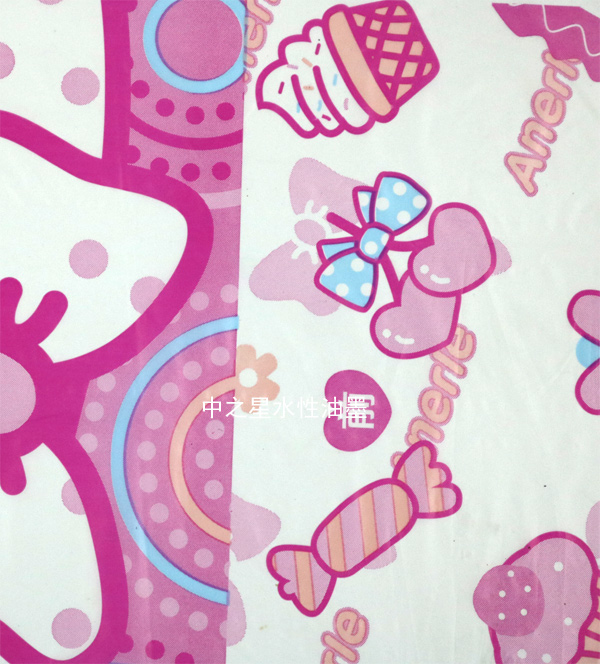Revolutionizing Sterile Packaging Solutions in Healthcare with Water-Based Inks
Date: Oct 24 2023 From: Star Color Views:
The healthcare industry has been evolving rapidly, driven by advancements in technology and a growing focus on patient safety. One often-overlooked aspect of healthcare is packaging, particularly when it comes to maintaining sterility. Sterile packaging is crucial in preventing contamination and ensuring that medical devices, pharmaceuticals, and other healthcare products are safe for use. In this article, we will explore the role of water-based inks in revolutionizing sterile packaging solutions in the healthcare industry.
The Significance of Sterile Packaging
Sterile packaging serves as the first line of defense in maintaining the integrity and safety of medical products. Whether it's surgical instruments, pharmaceuticals, or medical implants, the packaging must ensure that these items remain sterile until they are used. The consequences of inadequate packaging can range from infections and compromised patient safety to costly product recalls.
Traditionally, the healthcare industry has relied on various types of inks for labeling and branding on packaging materials. These inks have raised concerns due to potential health risks associated with volatile organic compounds (VOCs) and other harmful chemicals they may contain. Water-based inks offer a safer and more environmentally friendly alternative that is gaining traction in the field of sterile packaging.
Water-based inks are a type of ink formulation that uses water as the primary solvent, as opposed to the hazardous solvents found in conventional inks. This key difference makes water-based inks a safer choice for sterile packaging solutions. Here are some advantages of using water-based inks in healthcare packaging:
1.Reduced VOC Emissions: Water-based inks have significantly lower VOC emissions compared to solvent-based inks. This reduction in harmful emissions is vital for maintaining air quality and reducing the risk of indoor air pollution within healthcare facilities.
2.Health and Safety: Water-based inks are non-toxic and do not contain hazardous chemicals, making them safer for workers in the packaging industry and minimizing the potential for contamination during the labeling process.
3.Environmental Sustainability: With the increasing emphasis on sustainability in healthcare, water-based inks align with eco-friendly initiatives. They have a smaller carbon footprint and are biodegradable, reducing the environmental impact of packaging.
4.Color Quality and Precision: Water-based inks offer excellent color quality and precision, ensuring that labels on sterile packaging remain legible and reliable, which is essential for healthcare professionals.

The adoption of water-based inks in sterile packaging has led to innovative solutions that enhance the safety and effectiveness of healthcare products. Below, we explore some of these applications:
1.Barcoding and Serialization: Water-based inks can be used to print barcodes and serialization codes on sterile packaging materials. This enables accurate tracking and tracing of medical devices and pharmaceuticals throughout the supply chain, reducing the risk of counterfeit products and enhancing patient safety.
2.Anti-Counterfeiting Measures: Water-based inks can be formulated with security features such as tamper-evident inks and holographic inks. These measures help prevent counterfeit products from entering the market, protecting both patients and the reputation of healthcare brands.
3.Color-Coding: Water-based inks allow for precise color-coding on packaging materials, making it easier for healthcare professionals to identify specific products, dosage strengths, or expiration dates. This minimizes the risk of errors in clinical settings.
4.Enhanced Durability: Advances in water-based ink technology have resulted in formulations that offer excellent adhesion and resistance to moisture, abrasion, and chemicals. This ensures that labeling on sterile packaging remains intact throughout the product's lifecycle.
The healthcare industry is heavily regulated to ensure patient safety. When incorporating water-based inks into sterile packaging solutions, it's essential to adhere to regulatory guidelines and standards. Some key considerations include:
1.FDA Approval: In the United States, the Food and Drug Administration (FDA) regulates packaging materials and inks used in healthcare. Manufacturers must ensure that their water-based inks meet FDA standards for safety and quality.
2.ISO Standards: The International Organization for Standardization (ISO) has established standards for packaging materials used in healthcare. Manufacturers should comply with relevant ISO standards, such as ISO 11607 for sterile packaging.
3.Testing and Validation: Before implementing water-based inks in sterile packaging, rigorous testing and validation processes are necessary to confirm ink durability, adhesion, and sterility maintenance.
4.Labeling Requirements: Packaging materials must include accurate and compliant labeling, including information on the product, instructions for use, and any necessary warnings or precautions.
As the healthcare landscape continues to evolve, the role of water-based inks in sterile packaging is likely to expand. Manufacturers and healthcare professionals alike must stay informed about regulatory requirements and emerging technologies to ensure that sterile packaging remains a reliable and effective safeguard for patients.
 RU
RU
 EN
EN
 CN
CN

